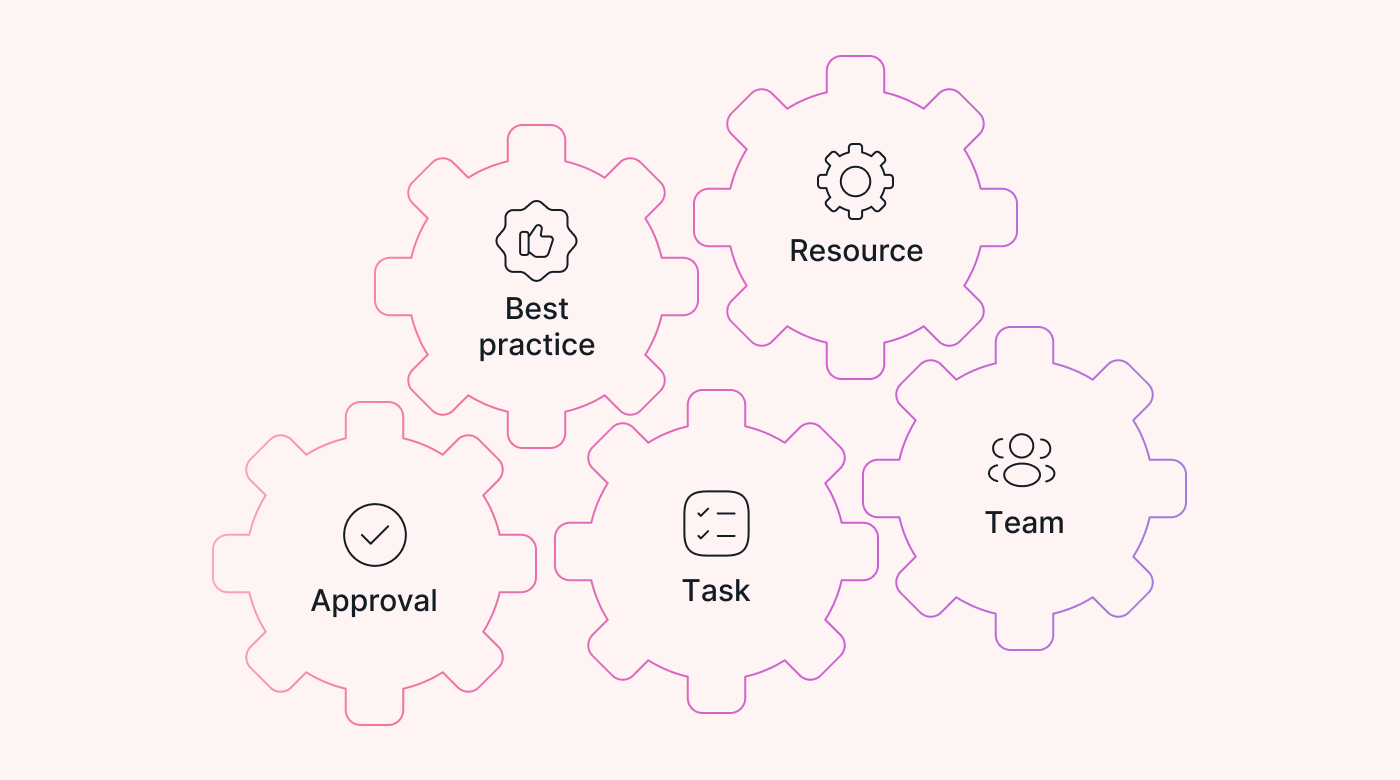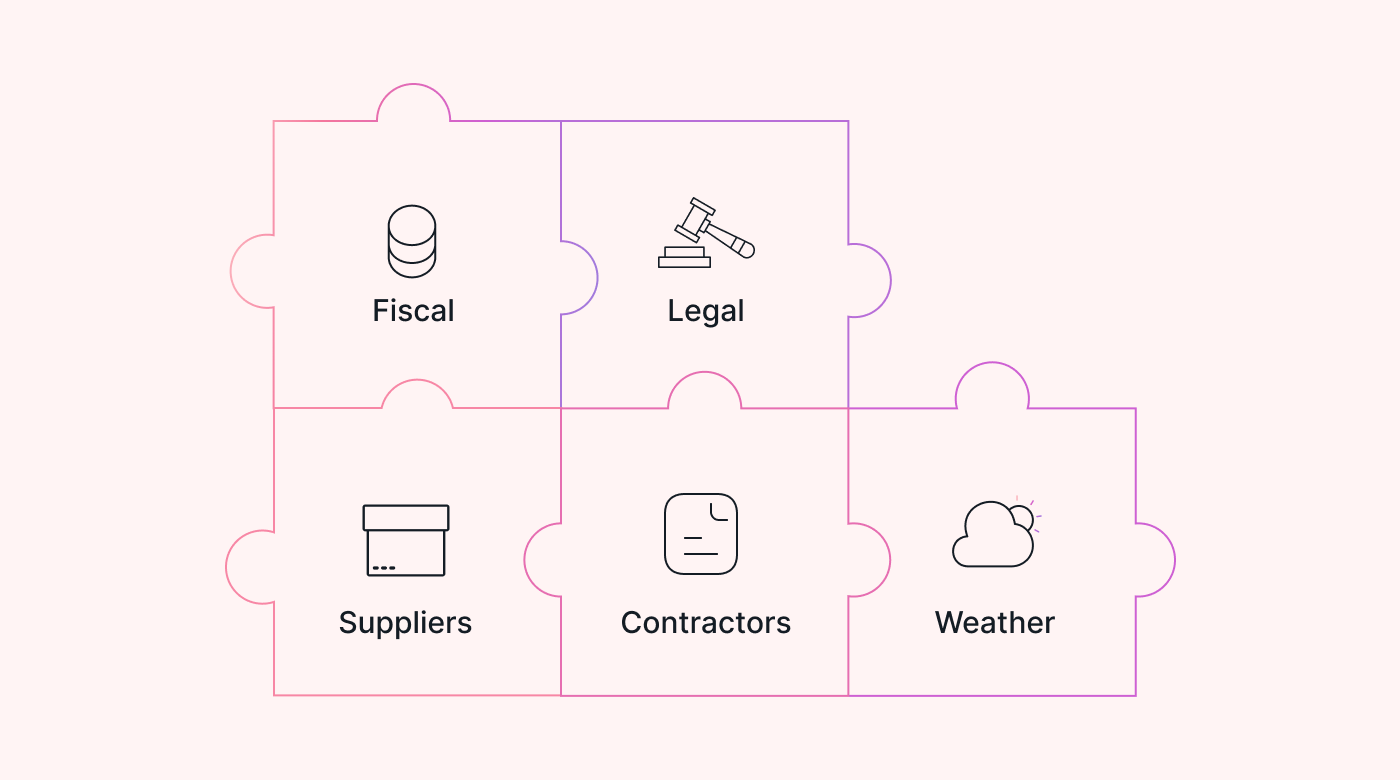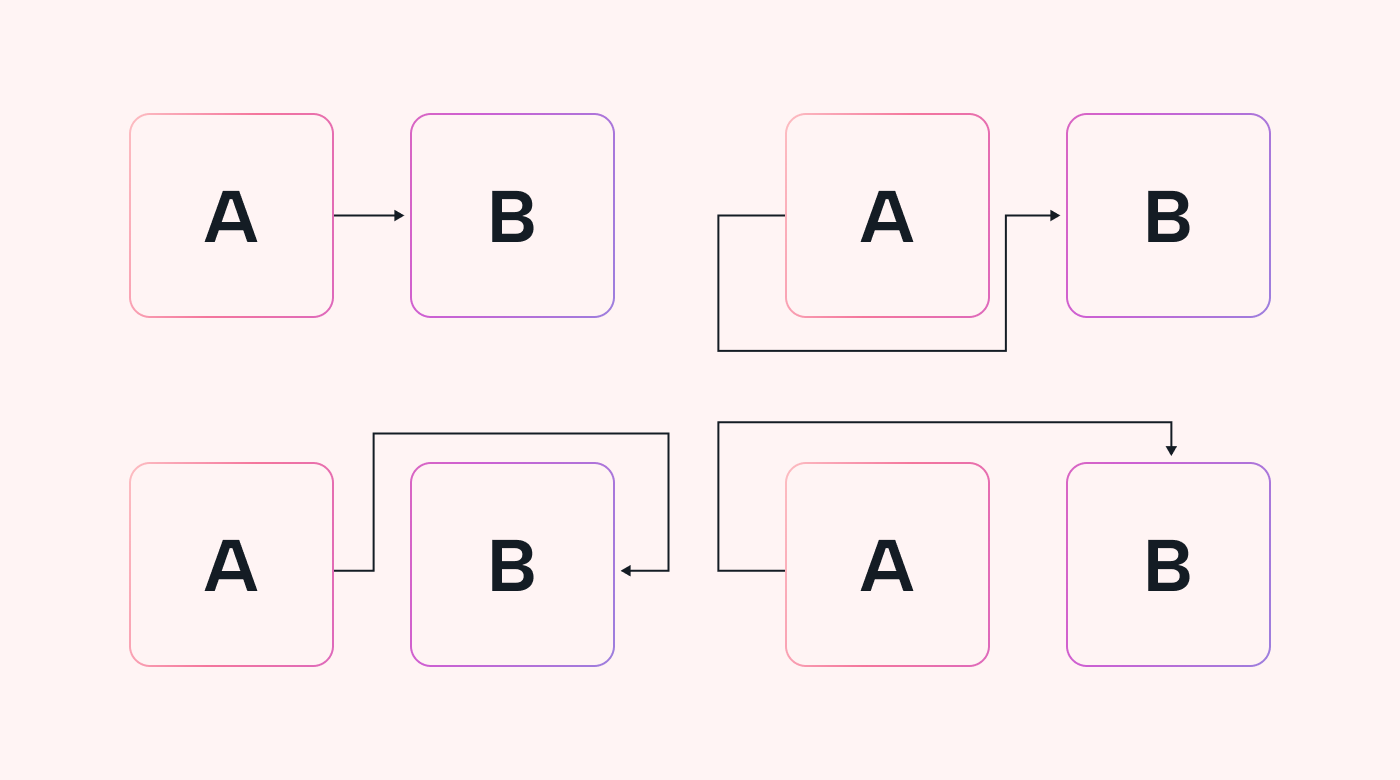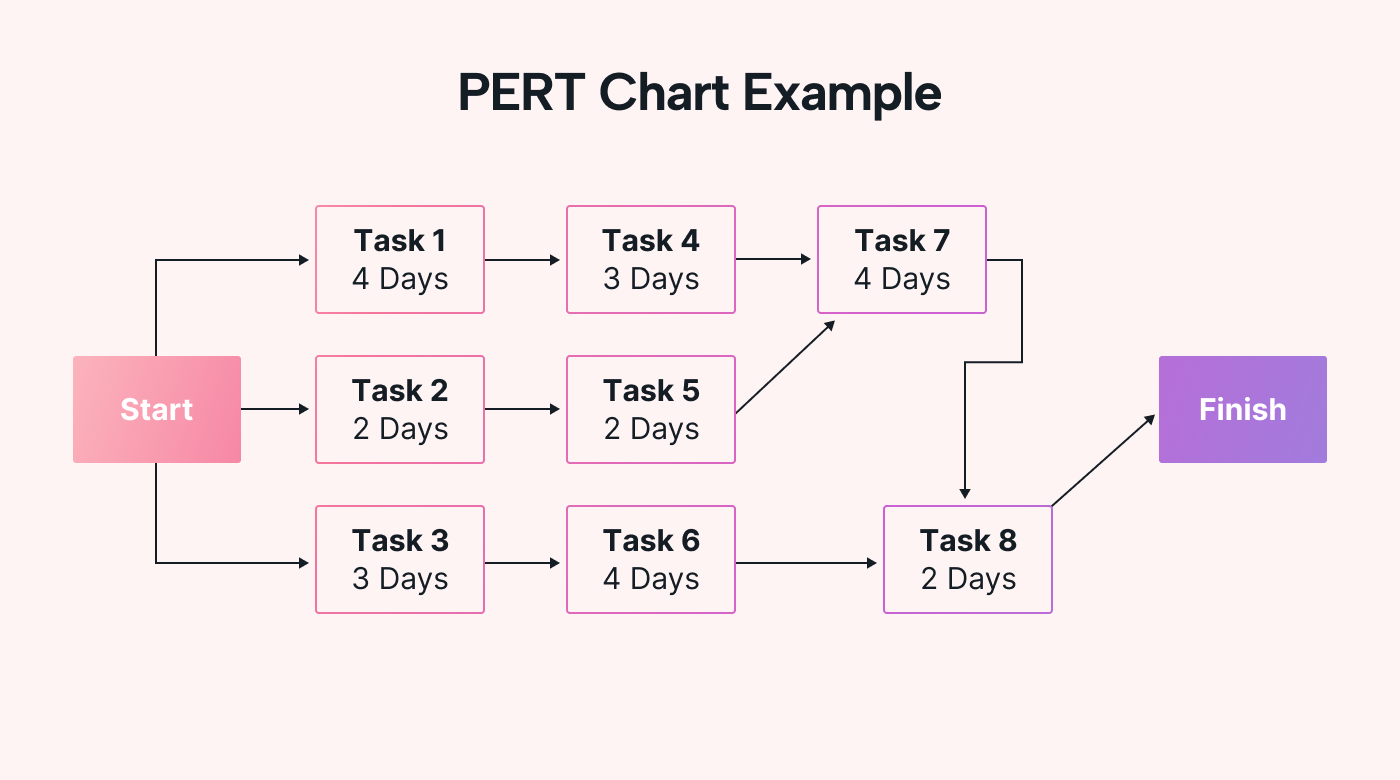Everyone knows what it means to be dependent upon someone or something. A fish is dependent on water. A car is dependent upon fuel. Projects also have dependencies. A dependency in project management is a task or action that must occur before another task in the project can happen.
Dependencies can add expense and complication to project management. However, they can also ensure that tasks are performed in the right sequence. By understanding dependencies within your project, you can manage their influence on project completion. Dependencies cannot be avoided, but their impact can be minimized.
Dependencies versus constraints
The terms dependencies and constraints are often used interchangeably. They are, in fact, two different topics. A constraint is a restriction or limitation placed on a project. For example, a $10,000 budget is a constraint. A dependency is something that must happen for the project to proceed.
Constraints usually fall within three categories: scope, cost, and time. An example of a dependency would be the building of a new warehouse. The materials must arrive for the construction team to build the structure.
Types of dependencies
Dependencies are created and impacted by countless factors, both internal and external. However, most dependencies fall into one of five categories.
Resource-based
These dependencies rely on the availability of resources to proceed with tasks. Resources include labor, finances, time, location availability, and materials.
External dependencies
No matter how well a project has been planned, external forces can impact a project's viability. A delay in the delivery of materials or an unexpected increase in labor cost are examples of external dependencies. To minimize the impact these have, it's best to have a risk management plan.
Preferential dependencies
Your company's preferences or policies impose these dependencies but aren't otherwise necessary for the next task to proceed.
Example: A librarian checks books out at the front desk. Another employee at the door ensures all books have been checked out properly. The check at the door isn't required, but it's the library's policy.
Cross-team dependencies
Tasks that span one or more teams can have cross-team dependencies. These dependencies require one team to finish a step before the next team can pick up the progress.
Example: The accounting team at your firm must finish their review and approval before materials for the project can be procured.
Logical dependencies
These are the most straightforward dependencies. They function like an if-then statement and move from start to finish linearly.
 |
Example: A one hundred units sales goal requires two full-time salespeople. You currently only have one. To meet your set sales quota, you must hire a new employee.
Internal dependencies
An internal dependency is within the team's control. These dependencies can be logical, resource-based, or cross-team dependencies. While these dependencies can span all project elements, there are common themes among internal dependencies.
Best practice
A best-practice dependency is created by a practice standard set in place by your company. For example, a sales team shares a company vehicle. The second salesperson can only visit potential customers once salesperson B returns with the vehicle.
However, it's company policy to keep the gas tank from getting below a quarter of a tank. Salesperson B must stop at the gas station before returning with the car.
Resource-based
These dependencies require some resource to be present before the task can begin. For example, a quality control team can only examine a new product once manufacturing has produced it.
Team-based
A team-based dependency requires two teams to work together collaboratively. Take the example of a new website, which can only be published once the copywriting department has submitted the copy.
Task-based
These are logical dependencies required for a project's completion. For example, the printer must complete and return invitations before a sales team can send them to customers to attend a grand opening.
Approval-based
This is another straightforward dependency. This dependency requires approval to take place before another task can occur. For example, a new restaurant building can begin construction once they obtain permits from the local government.
 |
External dependencies
Dependencies that rely upon factors outside of your company are external. These are outside the company's control and can be the most problematic to a project's success. External factors can be numerous, and more than one may arise at any time.
Some common external dependencies are:
Weather
The unpredictability of the weather can derail even the best-planned project if it has to be done outside.
Financing
Even if loans and funds have been secured at the start of a project, circumstances may suddenly change and endanger a project's completion. For example, if loans were taken out at a variable interest rate and that rate dramatically increases, there may be less money available than needed for completion.
Legal and regulatory issues
A project is impacted by local, state, and government legislation. Laws and regulations can change and impact projects already in process. Companies may be subject to unexpected lawsuits, which may indefinitely postpone project progress.
Suppliers
Whether your suppliers bring inventory or building materials, your project depends on them to stay on track. While suppliers may promise a specific cost or delivery date, they may also depend on external factors to ensure their promises to your business are met.
 |
For example, take a supplier that has promised you delivery of ten sets of shelves by December 1st. The wood needed for the supplier to make the shelves becomes back ordered and delayed. The supplier can only make and deliver the shelves to you once the wood arrives at their facility.
Contractors
When hiring contractors, one of the questions that is most frequently asked is how long the job will take. Contractors provide you with their best estimate for the time a specified job will take. However, they are subject to possible weather, supplier, and staffing delays that arose after the provided estimate.
Task dependency relationships
Now that we've reviewed the types of dependencies you may encounter let's look at how they can intersect with one another. Despite dependency relationships being varied, if they are resourced within the project team, all of these are internal dependencies.
There are four types of dependencies, and each type determines when and how the next task in your project management sequence can begin. Taking time to examine how each dependency in your project relates to the others will empower you to understand the relationship between those dependencies on your timeline, budget, and project needs.
Finish to start
One task (or more) must be finished before the next one can begin. This is the most common type.
 |
Example: All engine parts must arrive before the engine can be assembled.
Finish to finish
Task B can only be finished once task A has finished.
Example: The framing on a new home can start construction once the foundation is poured.
Start to start
Task A must start before task B can begin.
Examples: Two house painters are working together. The first painter is taping off the molding. The second painter can begin painting once the first molding has been covered.
Start to finish
Task B needs to begin for task A to be completed.
Example: A shift of nurses who work in the afternoon can’t leave until nurses arrive to work the night shift, and patient status is shared.
Dependency management tools
To best manage dependencies, software can be quite helpful. There are many tools available, and you should choose one that works best for your company's needs. Many software tools can support dependencies as defined in the following popular project management techniques.
PERT; This stands for Program Evaluation Review Techniques and is an easy way to depict how tasks are related. The PERT analysis calculates the most likely duration of the project. PERT charts are also used to assign tasks to project participants.
CPM: This method, entitled the Critical Path Method, represents the longest dependency path required by the project, from start to finish. If we look at Lisa's project, building a second car wash franchise, the project will have many tasks dependent upon one another.
 |
Minimize your dependencies to maximize your throughput
Minimizing dependencies can be done from the first day of a project's timeline. When examining task dependencies, closely examine where you can eliminate them. For example, desks can only be installed in a new office space once the flooring is put down. Instead of waiting for one person to install all the flooring, hiring more installation workers will speed up this process. Examine task dependencies closely, and for each dependency, ask yourself:
- Is this dependency necessary?
- Could it be eliminated with additional resources?
- Which employee(s) could manage this dependency to avoid harming the project outcome?
Manage dependencies with ease
With a thorough understanding and proper planning, dependencies within project management can be manageable. Understanding process flow, timeline, and sequencing will ensure your project runs according to plan without delays.
Motion's software shows you how to take your project management from a pile of sticky notes on a whiteboard to an organized format. Motion's Intelligent Calendar will use AI to deliver tasks to your team's calendars based on priorities, dependencies, resource availability, and deadlines.
Your team members won't have to figure out what to do next. Motion will do that for them, and for you. Using Motion is like having an extra employee helping you manage your project. Click here to Start your free trial today and take control of your projects.





